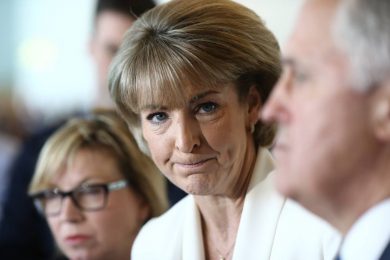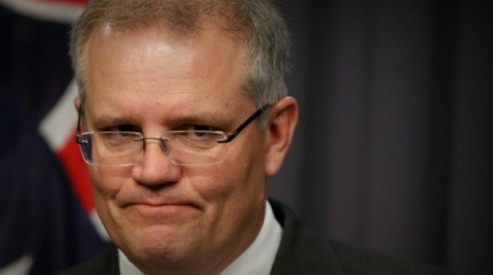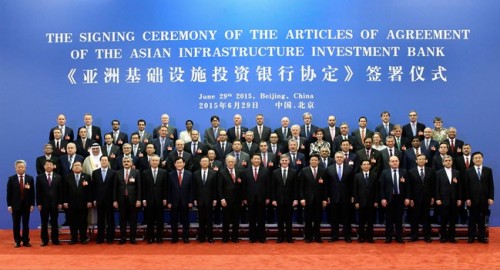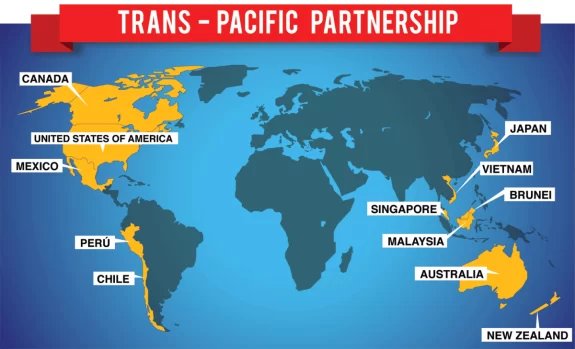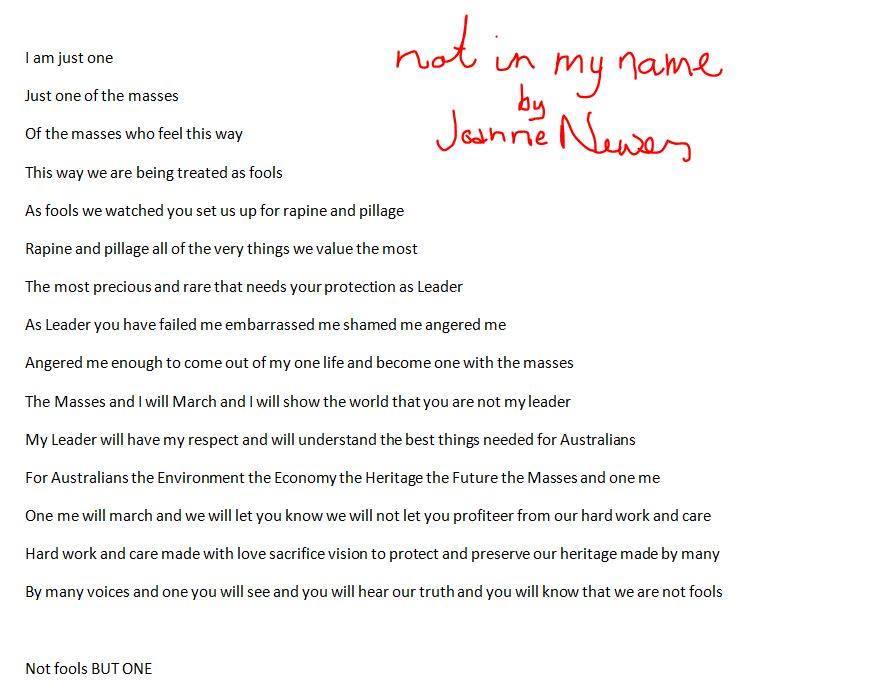Denis Bright invites responses about the long-term significance of the structural changes in China’s economy and its global financial outreach. Future implementation of such changes can be steered by Chinese leaders themselves or imposed from outside by joining the Trans Pacific Partnership (TPP) on terms that are not completely acceptable to China. The latter option would require a more corporate-led style of economic development. Evidence of the significance of the forthcoming structural changes in the Chinese economy is far from complete. The author is open to feedback on the issues raised in this article.
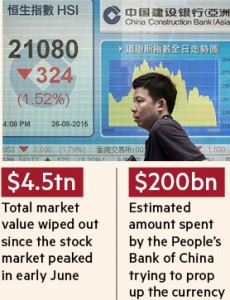
Chinese financial market jitters (FT Online 28 August 2015)
As global financial markets stabilise after recent volatility, news services have rushed to offer explanations of the recent downturns in Chinese financial markets.
There is little doubt about the extent of China’s market correction. The People’s Bank of China (PBOC) and the Chinese government were ready to use up a tiny portion of accrued foreign currency reserves to prevent a free-fall in the market.
News networks around the world tried to explain the significance of China’s market correction.
Germany’s DW News on 29 July 2015 sought clarification from Dr Sandra Heep of the Mercator Institute for Chinese Studies (MERICS) in Berlin on the significance of China’s market corrections for both China and the wider global economy.
The extent of the potential market volatility put Dr Sandra Heep on the spot as the eye of a financial storm was approaching. With her expertise in longer-term economic analysis, Dr Sandra Heep was careful not to join in the guessing game to predict tomorrow’s financial markets.
https://www.youtube.com/watch?v=si9Xg3M3ggE
Seeking longer term perspectives for China
Months before in 2014, Dr Sandra Heep in her prior research position at the Institute of Chinese Studies at Freiburg University was able to be more forthright about the structural changes needed to complete China’s successful transition from its current status as a developmental economy.
Dr Sandra Heep’s broad interpretations of China in transition as the world’s second largest economy are readily endorsed by the news releases from China’s leaders themselves and economic data from independent sources.
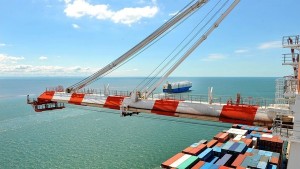
More high tech future and global financial outreach for China? (Financial Times Online (London) 25 August)
Although China is now the world’s second largest economy, it may be reaching the limits of its sustainability as a global workshop for the supply of a full array of goods and services.
China’s current status comes with great social and environmental costs as noted by Dr Sandra Heep in her interpretation of China’s capacity as a developmental state with a considerable degree of state planning in its economy.
As a developmental state, China is still identified with the suppression of the purchasing power of lower paid workers, arrested improvements in environmental quality and the sheer cost of living challenges in congested cities.

Long Island, New York: Property haven for Chinese elites? (FT Online 31 August 2015)
Ironically, many other developing countries within the TPP network share similar problems which are excused by advocates of the market model as a necessary transitional phase.
Mexico is a prime example despite its long-standing free trade agreement with Canada and the US under the North American Free Trade Agreement (NAFTA) since 1994.
China also lacks a fully globalized banking system on the scale of financial operations in the US and some Western European countries.
A section of Chinese economic elites are able to distance themselves from the real life problems of a transitional economy. The situation was similar in the earlier generations of industrialization in Britain, Germany and the US.
Prestige property investments in US or Australia are staked out by these economic elites as appropriate hedge assets.
The challenges of economic diversification and global financial outreach
The leaders of the real world China are probably enthusiastic about steering the economy in new directions. However, questions must remain about the appropriateness of the TPP’s market model.
China’s vast foreign currency reserves can be used to foster more dynamic forms of social market capitalism with an outreach into finance, infrastructure investment, environmental sustainability and development assistance.
Pragmatic neighbours like Russia as well as the countries of Central Asia and the Middle East are usually prepared to take advantage of China’s expanded international outreach.
Official Chinese investment could also bankroll longer-term projects in both the Australian private sector and future government sponsored sovereign wealth infrastructure funds along the lines of Temasek Holdings in Singapore.
To Australia’s credit, our support for China’s diversification is evident in the presence of Treasurer Joe Hockey at the inauguration of the expanded Asian Infrastructure Investment Bank (AIIB) in Beijing on 29 June 2015.
The extent of Australia’s role in the bank will be determined largely by the commitment of the next incoming government. AIIB will not be fully operational until 2016.
Significant for China is the presence of countries from Central Asia and the Middle East along the Silk Road Land Bridge to Europe.
Europe itself is represented by all the key economies, including the UK.
Israel has also joined the AIIB. This country has benefited from the investment of Chinese technology in urban transport.
The positive implications for peace and stability in the Middle East from this investment by Chinese infrastructure firms are immense.
There is no long-term reason for the exclusion of strife-ridden countries like Iraq and Syria from this investment outreach after UN-sanctioned peace initiatives.
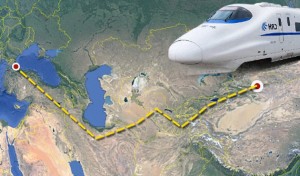
Proposed Silk Road infrastructure for Central Asia (World Bulletin 2014)
Such positive commercial changes might be thwarted if China was forced to drift back to a pure market oriented financial system. Such infrastructure investment is always a long-term commitment.
This cannot be assured in a financial system which is preoccupied with short-term futures with a trickle-down capacity to benefit legitimate investment.
In this sense, the current negotiations to finalise the TPP present a dilemma for China.
While undoubtedly well informed of the TPP negotiations, China is not one of the core partners of an avowedly market oriented investment and trading network.
The challenges posed by the Trans Pacific Partnership (TPP) for China
It is for the China’s current leadership to decide just how to respond to the current TPP drafts which will greatly empower business corporations by internationalizing competition laws.
TPP drafts contain embedded assumptions about the superiority of the market model of development and of the carrots available from the trickle-down benefits of new corporate investment in each of the participating countries.
The hegemony of rogue elements in global financialization processes is also a temptation for China to take a similar path to economic diversification along the pure market model.
Professor Gerard Epstein of the Political Economy Research Institute (PERI) at the University of Massachusetts in Amherst explains the mechanisms of these financialization processes which have become the ground rules for successful international finance.
In the aftermath of the Global Financial Crisis (GFC), the late Professor Peter Gowan of the International Relations School at London Metropolitan University gave a similar but more detailed synopsis of the challenge of rogue capital flows in Crisis in the Heartland. This article is readily available online. (http://newleftreview.org/II/55/peter-gowan-crisis-in-the-heartland).
Changing the protocols for China’s global outreach
The US sponsored Trans Pacific Partnership (TPP) and a proposed Transatlantic Trade and Investment Partnership (TTIP) between the US and the EU impose a fundamentally different style of economic development and global outreach for China.
China’s key financial institutions must operate within the prevailing rules for international finance. The more interventionist approaches of China’s Asian Investment Bank (AIIB) and the BRICS Group of Brazil, Russia, India, South Africa and China itself are still minor players on a global scale.
China’s hesitancy to join the TPP negotiations has its parallels across the Pacific Rim where the internationalization of competition laws and intellectual property rights has its own detractor in most countries.
Without the release of the TPP negotiation drafts by Wikileaks in 2013, most political leaders would still remain silent about the implications of the voluminous chapters on intellectual property rights and investment protocols.
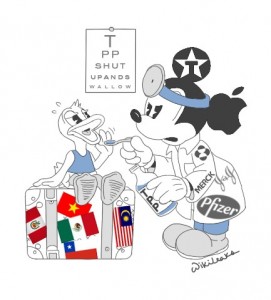
Wikileaks Press Release (https://wikileaks.org/tpp-ip2/)
In the words of WikiLeak’s Editor-in-Chief Julian Assange, “If instituted, the TPP’s IP regime would trample over individual rights and free expression, as well as ride roughshod over the intellectual and creative commons. If you read, write, publish, think, listen, dance, sing or invent; if you farm or consume food; if you’re ill now or might one day be ill, the TPP has you in its crosshairs.”
While China’s leaders might hesitate about the benefits and costs of future participation in the TPP, the proposed internationalization of competition laws in favour of business corporations across the Asia Pacific Rim has also been a divisive issue within the Obama Administration which depends on the support of organized Labor in key swing states like Ohio and Pennsylvania.
In order to gain approval for current drafts of the TPP Treaty, President Obama needs to rely on the support of conservative Republicans for endorsement of the treaty in the senate.
Writing in The National Interest on 6 July 2015, Sean Mirski with a background at the Harvard Law School made the following observations about the impact of the TPP.
At first glance, the Trans-Pacific Partnership (TPP) looks much like any other trade deal. By increasing trade and investment among its partners, the TPP sets out to stimulate a higher rate of economic growth in the United States and among many of its Pacific friends. As with similar treaties, the TPP has been the subject of controversy in the U.S. Congress, which very nearly killed a key piece of legislation necessary to America’s ratification of the agreement. But while American lawmakers attacked and defended the treaty largely in narrow economic terms, they appeared to disregard its main strategic promise.
Besides creating jobs, the TPP may also alter the balance of power in the Asia-Pacific. The treaty will increase the rate of economic growth in the United States and in an array of friendly nations while simultaneously diverting trade flows away from Washington’s greatest competitor, China. More important than any of these absolute changes in economic output, though, is the relative change in national power, itself the product of economic might. Whereas trade is often discussed in absolute terms, relative gains are more important in the often zero-sum world of international politics. If the TPP can change the trajectory of American power relative to China’s, it may be the single most important factor in whether the United States retains its “indispensable” role in the 21st Century.
The National Interest 6 July 2015 available at (http://nationalinterest.org/feature/the-trans-pacific-partnership-china-america-the-balance-13264)
These comments from an articulate writer with close links to the US intelligence community provide justification for further discussion about the geopolitical role of the TPP as a vehicle for the return of old balance of power strategies for the containment of China.
With China outside the current TPP draft deals, its business and investment agencies must ultimately compete on the terms of investment protocols decided by the TPP across the entire Pacific Basin.
Taiwan’s potential membership of the TPP provides an additional twist to the current economic diplomacy and has security implications for the stability of the Pacific Rim.
The Ministry of Foreign Affairs in Taiwan strongly endorses its unilateral participation in the TPP without reference to China:
The TPP aims to establish a comprehensive, next-generation regional agreement that liberalizes trade and investment and addresses new and traditional trade issues and 21st century challenges. It currently has 12 members, including the US, Japan, Canada, Australia, New Zealand, Singapore, Malaysia, Vietnam, Brunei, Mexico, Chile and Peru. Most of the TPP members are Taiwan’s major trading partners, accounting for over 30 percent of our foreign trade. Thus, the significance of joining the TPP cannot be overemphasized. President Ma Ying-jeou has announced our resolution to join the TPP and we have won support from the US and Japan, with both countries publicly welcoming Taiwan’s interest in joining the TPP. The Ministry of Foreign Affairs and its representative offices overseas have taken bilateral relations as the cornerstone and are making every effort to garner the support of other members pursuant to our accession to the group (Ministry of Foreign Affairs Republic of China (Taiwan) 2014)
Data from the Center for East Asia Policy Studies shows the vast economic capacity within a TPP that included Taiwan. South Korea is likely to be added to the matrix.
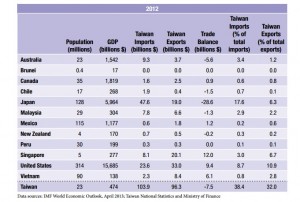
Center for East Asia Policy Studies 2014
Thwarting the economic diversification of China on its own terms through the formula proposed by the TPP investment in the Pacific Rim would be a triumph of short-term politics over international peace and stability if Chinese leaders continued to be shut out of the negotiation processes.
Added to the challenges of future economic diplomacy are the separate but near identical territorial claims by both China and Taiwan over sections of the East China Sea and the South China Sea.
Under current co-operative arrangements between the ruling Kuomintang (KMT) Government in Taiwan and China, the Taiwanese proposal to resolve territorial disputes and fishing rights might gain some traction within China itself.
Such claims would be taken more seriously if both Taiwan and China presented a joint submission as part of a One China Additional Systems Approach as with the resolution of Hong Kong’s closer association with China almost 20 years ago.
The window of opportunity facing the TPP Negotiators and Australia
The window of opportunity is closing on this pragmatic arrangement with Taiwan. Local opinion polls are highly favourable to the opposition right-wing Democratic Party in Taiwan as the presidential elections approach on 16 January 2016.
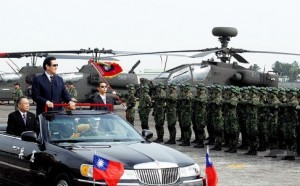
President Ma Ying-jeou of Taiwan inspecting US made military hardware
President Obama will go down in history as one of the greatest of negotiators if a Win Win Win can be developed during President Xi Jinping’s visit to the US in September 2015. This trifecta would have to be a deal which is totally acceptable to China, Taiwan and the US.
Meanwhile it is in Australia’s interests as a responsible middle power to maintain an independent voice in the resolution of the problems posed by the TPP and the sensitivities of China towards the resurgence of Taiwan as a nation state.
Prime Minister Abbott’s support for the prevailing texts of the TPP is hardly Whitlamesque.
Opposition to the current draft of the TPP comes from both sides of the political spectrum across the Pacific Rim.

1973 Postcard from Beijing: A precedent for a constructive role for Australia
Rural lobbies in New Zealand and Japan are delaying the final draft from the political right.
Organized Labor in the US fears job losses in key swing states which must be won by the Democratic Party to keep the Republicans out of office in 2016. In these states, Democratic representatives and senators are cautious about opening up the domestic economy to more overseas competition.
The exclusion of China from the TPP negotiations also hinders its financial outreach across the Pacific Rim as a major economic superpower.
This locks China into its current workshop of the world status. Forcing compliance from China with TPP protocols can contain this economy’s sustainable growth rate and build-in a lower potential threshold for future Australian exports, service agreements and financial ties with a weaker than necessary China.
In this context, Australia can afford to be more proactive in seeking more Whitlamesque amendments that bring China into the TPP on fair terms and conditions. Given the pockets of discontent with the current TPP negotiators, Australia can win goodwill in most countries across the Pacific Rim by becoming a more independent player in both economic diplomacy and the containment of security concerns.
 Denis Bright (pictured) is a registered teacher and a member of the Media, Entertainment and Arts Alliance (MEAA). He has recent postgraduate qualifications in journalism, public policy and international relations. His specialist interest is the impact of contemporary globalization on the delivery of progressive public policies.
Denis Bright (pictured) is a registered teacher and a member of the Media, Entertainment and Arts Alliance (MEAA). He has recent postgraduate qualifications in journalism, public policy and international relations. His specialist interest is the impact of contemporary globalization on the delivery of progressive public policies.
